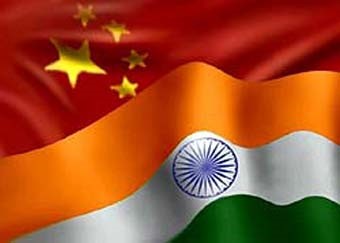 The Chinese patrol that crossed the Line of Actual Control (LAC) in the Daulat Beg Oldi sector of Ladakh and pitched tents 19 km inside Indian territory is still there. It is a tactical level incursion possibly in response to a pro-active Indian stance along the LoC. There is a fairly high probability that eventually the unprecedented stand-off will be resolved through diplomacy as neither country stands to gain from a border skirmish.
The Chinese patrol that crossed the Line of Actual Control (LAC) in the Daulat Beg Oldi sector of Ladakh and pitched tents 19 km inside Indian territory is still there. It is a tactical level incursion possibly in response to a pro-active Indian stance along the LoC. There is a fairly high probability that eventually the unprecedented stand-off will be resolved through diplomacy as neither country stands to gain from a border skirmish.
While the Working Mechanism for Consultation and Coordination on India-China Border Affairs, agreed during the 15th round of border talks held in New Delhi in January 2012 between the two Special Representatives, is at work, it is time to reflect upon the lessons that are beginning to emerge from this avoidable episode.
It is not so well known that the LAC between India and Tibet, implying de facto control since the 1962 war, is yet to be physically demarcated on the ground and delineated on military maps. The un-delineated LAC is a major destabilising factor. Incidents such as the Nathu La clash of 1967 and the Wang Dung stand-off of 1986 have occurred in the past and the present impasse was waiting to happen. In fact, the two sides have failed to even exchange maps showing each other’s ‘perception’ of where the LAC runs. According to the grapevine, at one of the meetings of the Joint Working group the two sides ‘showed’ their respective maps to each other. The Chinese took one look at the Indian map and said please take it back.
Both sides habitually send patrols up to the point at which, in their perception, the LAC runs. Patrol face-offs in ‘no man’s land’, that lies between the two LACs as perceived by both sides, are commonplace. A drill has been evolved to tell the other patrol to withdraw peacefully. Both sides carry large banners in each other’s language and English. These are unfurled to tell the other patrol that it has transgressed the LAC and so far both sides have been going back peacefully after leaving some tell-tale signs like biscuit and cigarette wrappers and creating a ‘burji’ or a pile of stones. However, such meetings have an element of tension built into them and despite the best of military training the possibility of an armed clash can never be ruled out. Such a clash with heavy casualties can lead to a larger border incident that may not remain localised.
While the government invariably advises caution, it is extremely difficult for commanders of troops to advocate a soft line to their subordinates. There is an inherent contradiction in sending soldiers to patrol what they are told and believe are Indian areas and simultaneously telling them that they must not under any circumstances fire on the intruding Chinese soldiers. This is the reason why it is important to demarcate the LAC without prejudice to each other’s territorial claims. Once that is done, GPS technology can be exploited to accurately navigate up to the agreed and well-defined LAC on the ground and even unintentional transgressions can be avoided. The present stand-off clearly shows how intractable the challenge is and how loaded the situation can become. Hence, the topmost priority of Indian diplomatic engagement with the Chinese should be to clearly demarcate the LAC.
The LAC in Ladakh is manned during peace time by the Indo-Tibetan Border Police that is a Ministry of Home Affairs (MHA) police force. The army often sends troops to maintain its forward defences and conducts periodic operational alerts to practice fighting a defensive battle should the need arise. The army has little knowledge of the ITBP’s patrolling plans and other movements as this border management force reports to the MHA through its own channels. This arrangement is not conducive to fostering a professional relationship between the two forces and for reacting to border violations of the kind that has occurred in the DBO sector.
Disputed borders should be managed by the army even during peace time so that duality of command is avoided. The principle of ‘single point control’ must be followed if the borders are to be effectively managed. Divided responsibilities never result in effective control. Maintaining unity of command is a fundamental principle of war. Hence, it is imperative that the ITBP battalions deployed on the Ladakh border be placed under the army’s operational control for better border management.
A key prerequisite for effective border management is the employment of national technical means for all weather surveillance and reconnaissance. These include satellite, aerial and electronic surveillance to detect and warn about suspicious movements and construction activities through photographic reconnaissance by day and night, the employment of UAVs for real-time intelligence and the use of electronic eavesdropping. India has not invested adequately in these modern methods and continues to rely on ‘eyes and ears’. This manpower intensive approach must change immediately.
Finally, as long as the territorial dispute is not resolved, China remains India’s foremost military threat. The Ministry of External Affairs must make all out efforts to seek an early resolution of the dispute and not be lulled by Deng Xiaoping’s gratuitous advice to former Prime Minister Rajiv Gandhi that it is a dispute left over from history and should be left to future generations to resolve. This strategy may suit China, but it certainly does not suit India.
By Special Arrangement with The Centre For Land Warfare Studies (CLAWS) (http://www.claws.in)